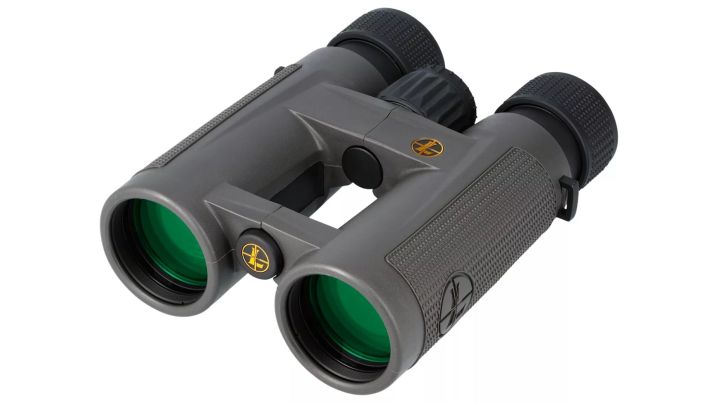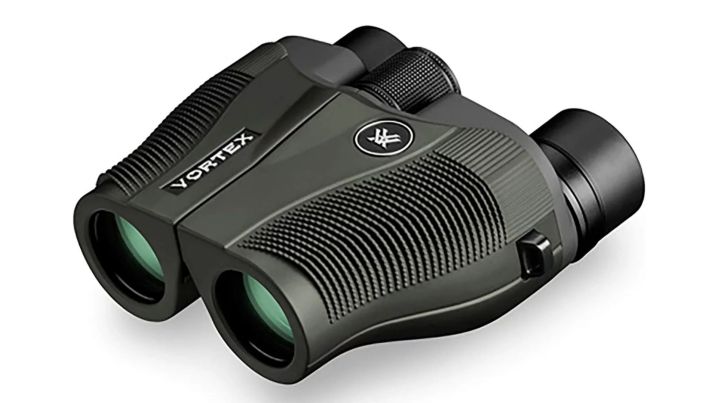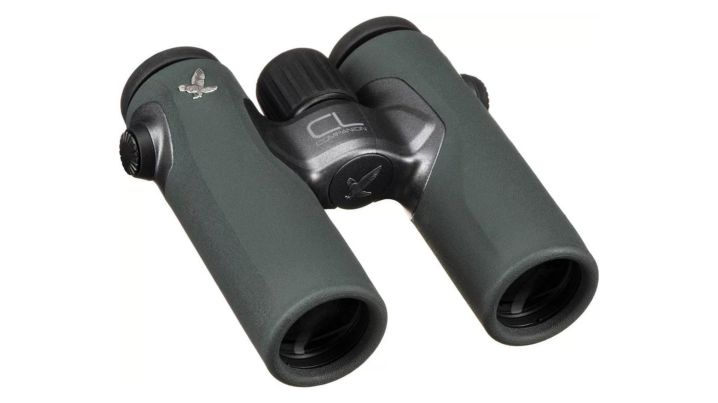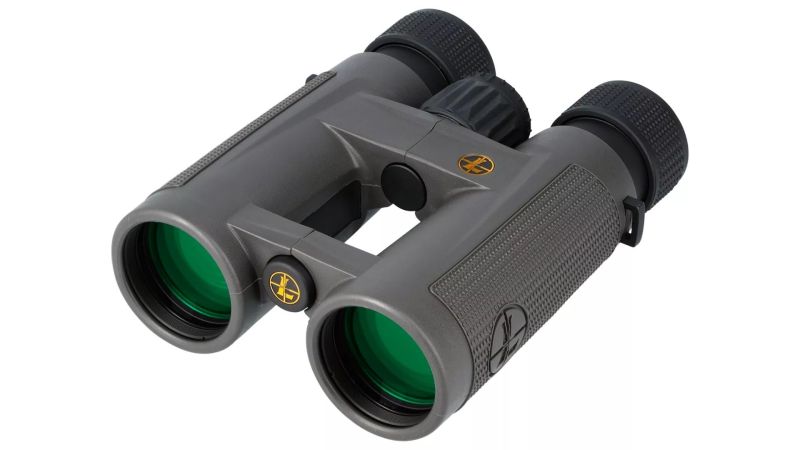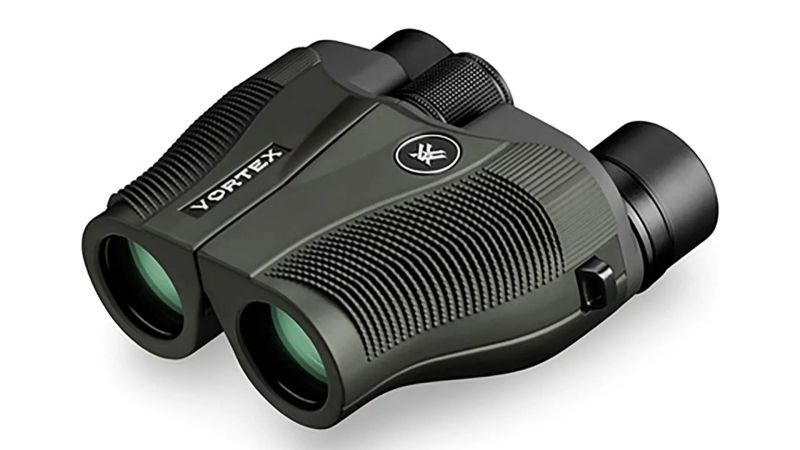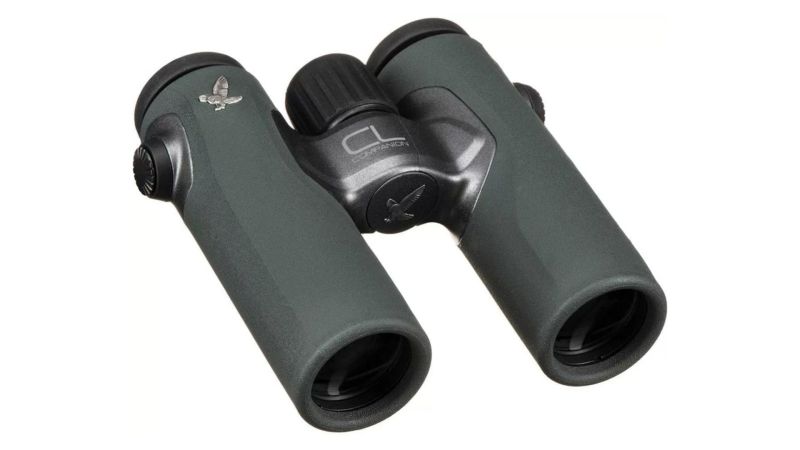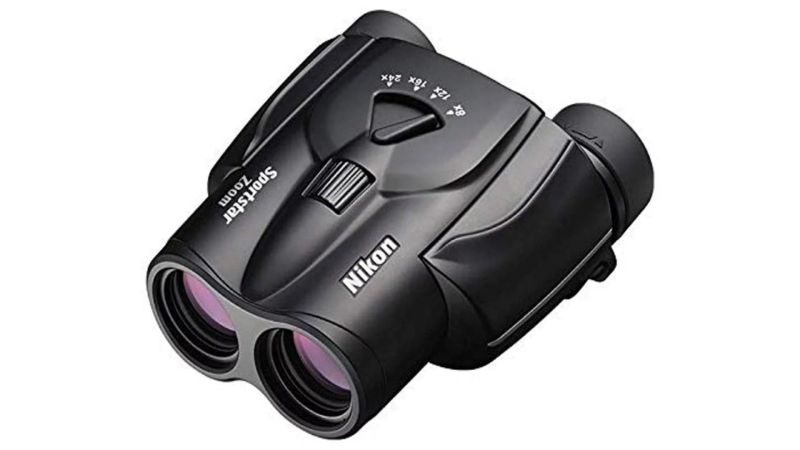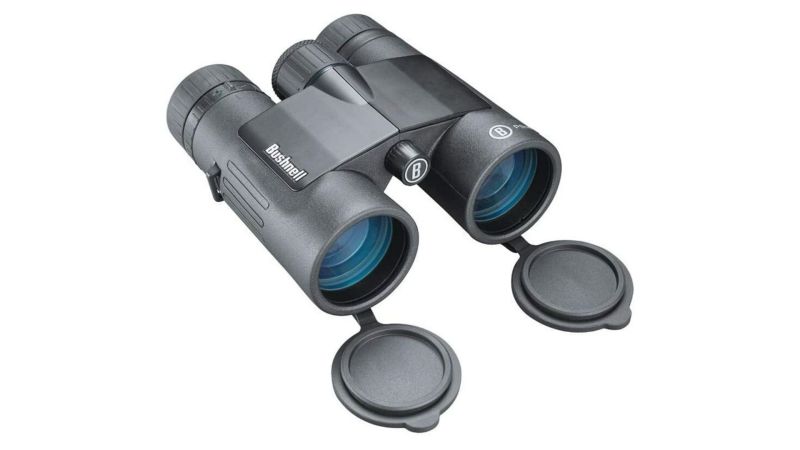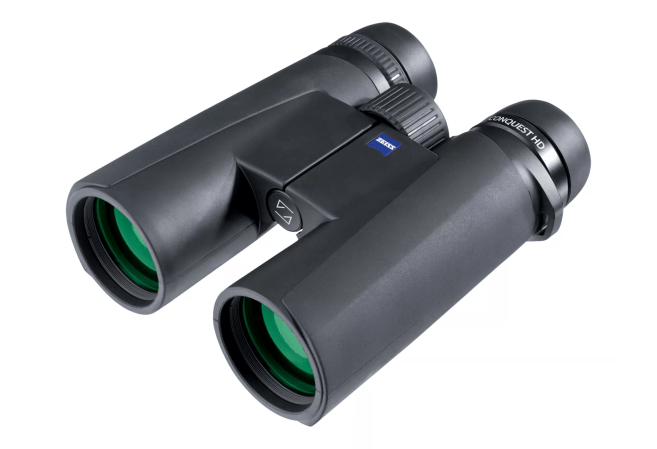We may earn revenue from the products available on this page and participate in affiliate programs.
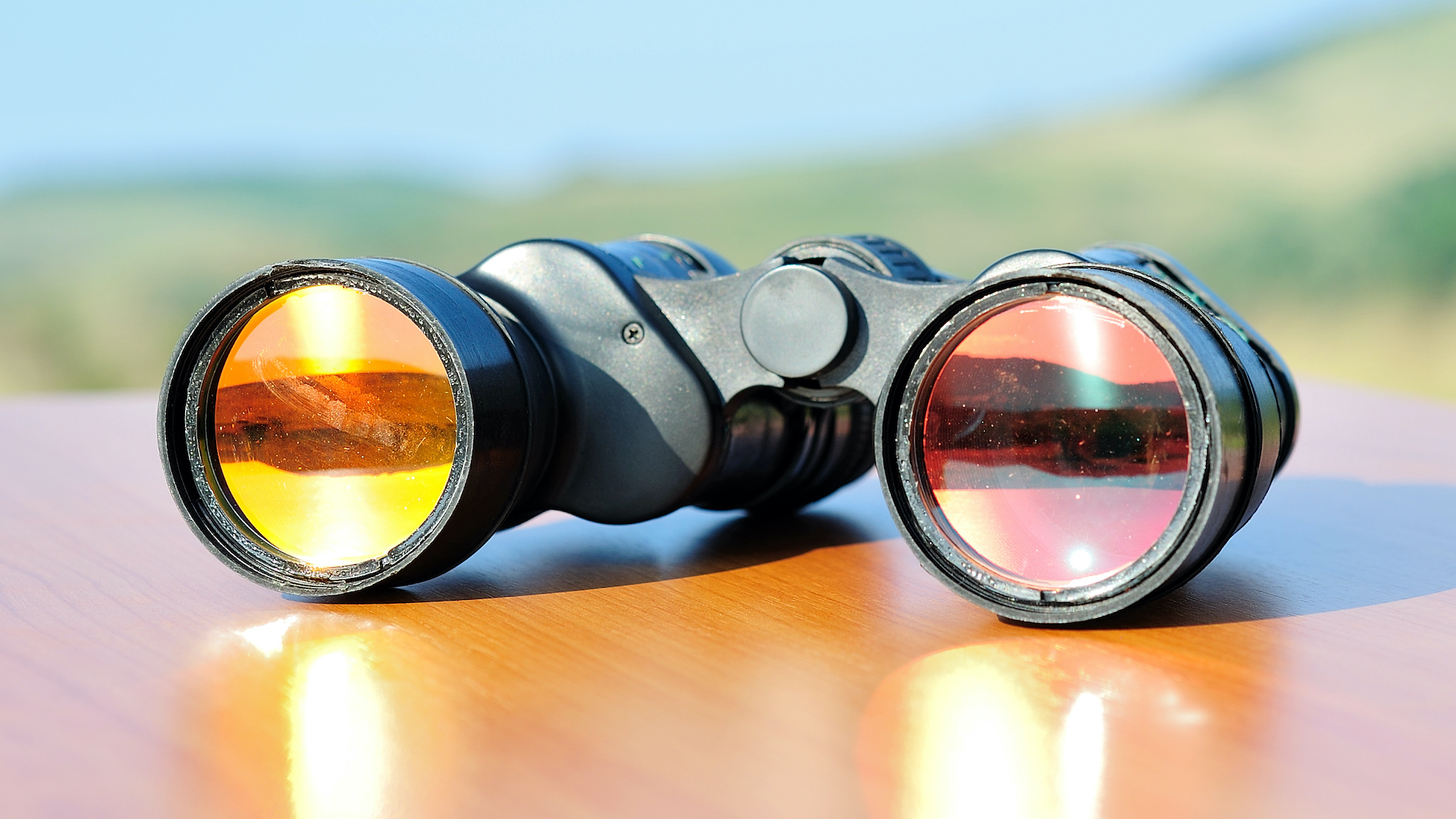
When it comes to optics, a good pair of compact binoculars is a great way to up your game. They’re more portable than long-distance binoculars, more usable at moderate distances than a spotting scope, and are much more publicly acceptable than a rifle-mounted optic.
A lot of attention gets paid to the EDC gear that makes up our everyday carry, but what you keep in your go-bag or vehicle is just as important. We’re big fans of throwing a pair of binoculars in the car; the same pair of Bushnell binoculars has been riding shotgun in my trusty rusty for more than a decade. I’ve used them to spot wildlife, scout dirt bike trails, and keep an eye on roaming bird dogs.
This list is all about putting the power of magnified optics in your hands without weighing you down. We chased down the best compact options from the best brands to keep this list short, sweet, and packed to the gills with quality equipment.
Best Overall
Leupold BX-4 Pro Guide
Best Value
Vortex Vanquish
Editor’s Choice
Swarovski CL Companion
Best Variable Power
Nikon Sportstar
Best Waterproof Compact Binoculars
Bushnell Prime
Best Premium Compact Binoculars
Zeiss Conquest HD
Why you should trust us
We’ve spent a lot of time reviewing optics. We know what works and what doesn’t, but we also appreciate the value of your money and keep a close eye on value. That approach translates to solid product recommendations, whether we’re searching for zoom binoculars that can do it all or dedicated hunting binoculars you can count on in the field. In addition to years of experience in the military and the great outdoors, we back up every single gear guide with research into the nitty-gritty so you can learn everything you need to know in one place. Why buy compact binoculars in the first place? What do all these numbers mean? What the hell is a diopter? We’re glad you asked.
Types of compact binoculars
Binoculars are built for a range of uses, and the same goes for compact binoculars. Before you pull the trigger on your next pair, make sure the positive reviews you see online are applicable to how you plan on using a set of binoculars. Allow us to hit the high points so you can make an educated decision.
Sporting
Lots of people like to bring binoculars to sporting events and concerts. It can be nice to have a magnified view of the action, especially when you’re in a large stadium that makes a massive screen look like a thumbnail. They’re also popular for checking in on a birdfeeder from a nearby window. These compact binoculars prioritize lightness and affordability.
Because sporting binoculars are used in very controlled environments, they don’t need to be particularly durable. Manufacturers reduce costs by eliminating protection against water, dust, and extreme temperatures. We wouldn’t recommend these binoculars unless you have no plans to use them in austere environments.
Birdwatching
Birdwatching is serious business. Differentiating between similar species from a distance requires realistic colors and crisp lines. In fact, some of the best resources for researching binoculars can be found on sites dedicated to birdwatching.
The binoculars built for birders are generally high-quality items that provide excellent views and can be adjusted to a wide range of eyes, with or without glasses. They’re relatively durable and feel right at home in the forest or sightseeing in a new city. They also make a great entry point for people looking for their first pair of quality binoculars because of their balance between price and features.
Hunting
Binoculars intended for hunting are held to a higher standard than most. That’s because hunters encounter severe weather, harsh terrain, and limits on the amount of gear they can carry. A clear view can also spot the difference between a trophy animal and an immature buck that needs a year or two to grow.
Hunting binoculars are also great for tactical use. Lenses are built from high-quality glass and receive several coatings to protect against fog, glare, and scratches. The air inside hunting binoculars is typically purged with nitrogen to prevent internal fogging. Rubber seals keep out water and dust that can ruin a pair of binoculars. Durable rubber exteriors provide improved grip and protect against impacts.
Key features of compact binoculars
Magnification
Naturally, most shoppers’ first consideration is magnification. This determines how much larger an image appears, and how far you’ll be able to accurately see into the distance. Most binoculars fall into the six- to 10-power range. That’s more than many rifle scopes and less than a spotting scope.
More magnification isn’t always better, though. Increasing the power of your binoculars may lead to a restricted field of view, added weight, and a higher price tag. Using a powerful set of binoculars freehand can also be challenging because it’s difficult to hold them steady. Try to use a tripod or some kind of brace for anything greater than eight-power magnification.
Prism Style
When an objective lens magnifies an image, it also flips it upside down. Magnified optics use different methods to correct this, and the binoculars on this list feature either a Porro or roof prism to deliver a usable image to your eyes.
Porro prisms are easy to spot because they result in objective lenses that are offset from the eyecups. This style of prism transfers the image horizontally during the correction process. It’s relatively inexpensive but is considered less durable than a roof prism. Porro prisms also require more space, resulting in a less compact overall package.
Roof prisms maintain a straight line from the objective lens to the eye, creating a slimmer tube and reduced opportunity for damage in the case of an impact. This newer style is popular because of its ease of waterproofing and performance at higher magnification, but image quality can sometimes suffer.
Diopter adjustment
If you’ve found that binoculars never seem to look right to you, it’s possible that your eyes need individual attention. Diopters solve this problem by allowing each eyepiece on a pair of binoculars to be focused individually.
To take advantage of a diopter (usually found on the right side), cover the right side of your binoculars and aim them at something that requires crisp focus, like a sign with text. Set the focus using the focus knob. Then cover the left side and adjust the diopter to focus the right eyepiece. The folks over at birdwatching.com have a great breakdown for more information.
Weather protection
We’re big fans of being prepared for as many challenges as possible, so weather protection is key for any kind of optic we allow onto one of our gear lists. Binoculars achieve this in two ways.
Rubber seals and O-rings create an air-tight assembly that’s impervious to water and dust. This also allows manufacturers to purge the air from binoculars and replace it with nitrogen gas that’s more stable and prevents internal fogging.
Coatings can also be applied to glass surfaces to prevent fogging. Other coatings protect against scratches and reduce the amount of glare that’s created by light reflecting off the objective lens. Many manufacturers stack several coatings on their glass.
Benefits of compact binoculars
Situational awareness
Knowing what’s going on around you is key, and good situational awareness isn’t limited by your eyesight. Binoculars can extend your range of vision and advanced techniques can help you do things like see through dense vegetation.
Having a pair of compact binoculars in your vehicle or pack can make a huge difference in the wild. Being able to spot a trail, waypoint, game animal, or another member of your group from a distance can save you hours and miles. That’s a big improvement in terms of convenience and can get you out of serious trouble from time to time.
Portability
Binoculars are great, and we’re huge proponents of owning a spotting scope that can make specs on the horizon look like they’re within arm’s reach. The trouble with both is that they’re fairly heavy and take up a lot of room. That might be fine in a vehicle or day pack, but longer journeys on foot call for something lighter. Compact binoculars solve the problem by saving space and weight in your pack.
The downside is outright power. The compact binoculars on this list max out at 10-power magnification, which is certainly serviceable but nowhere near the 80-power magnification of our favorite spotting scopes.
Ease of use
One underrated aspect of compact binoculars is their ease of use. The simple controls are easy to master while offering enough flexibility to match your eyes. They don’t require a tripod or rest and are easy to pass from one person to another to share the view.
If you’re a savvy outdoor enthusiast who can read a BDC reticle and operate any optic you lay your hands on, that’s great. You might not be able to say as much for the people around you, though. It’s nice to be able to hand off your binoculars to friends and family without needing to give them a crash course on how to use them.
Pricing considerations for compact binoculars
Budget
Shop around (or let us do the leg work for you), and you can get a screaming deal on quality binoculars. We found the Vortex Vanquish for 25 percent off, which put it just under the $100 mark.
Most of the time, though, you get what you pay for. Entry-level binoculars can get the job done, but they’re not necessarily good at it. Expect your view to be less sharp and with less realistic colors than you’d get from higher-end binoculars. Waterproofing and fog protection won’t be great, either. Budget binoculars are best suited to watching sporting events and keeping an eye on the bird feeder in your yard.
Mid-range
There are plenty of great compact binoculars in the $100 to $500 range, and a few of them made our list. This kind of money will get you into reputable brands like Leupold, Bushnell, and Nikon. For most people, this is the happy middle ground we recommend.
These binoculars offer great optical clarity, true-to-life colors, and plenty of adjustability. These attributes are hard to quantify, but they make a huge difference in any optic. Binoculars in this price range are also tough enough to knock around on the trail or in the deer stand without worrying about damaging them. Expect quality waterproof ratings and coated lenses that resist glare and scratching.
Premium
Premium compact binoculars start around $500, but the price goes way, way up from there. You don’t have to search very hard to find options that cost well over $2,000. Some of these binoculars come from high-end hunting optic brands like Swarovski. They’re the ultimate choice for big-budget hunting expeditions.
Some of the binoculars in this category are made by the same companies that produce top-shelf camera lenses. We included a pair of Zeiss binoculars, and Leica makes their own version. These binoculars might not be built for rugged outdoor use like Swarovski optics, but the optical quality is hard to beat. For crystal-clear viewing, they’re your best bet.
How we chose our top pick
There are a lot of binocular manufacturers out there, and some are better than others. Cheap optics can work in some circumstances, but we prefer gear that can take care of you for years, if not a lifetime. We focused on established brands with hefty track records of success when we set out to build this gear guide. You’ll see premium brands like Leupold and Swarovski alongside usual suspects like Bushnell. All our picks earned our vote of confidence and are welcome in our packs anytime.
FAQs on compact binoculars
You’ve got questions, Task & Purpose has answers.
Q. What do the numbers on binoculars mean?
A: Binoculars are numbered based on magnification power and size of the objective lens. A pair marked 8×26 would make the image you see appear eight times larger than it is and use a lens that’s 26 millimeters in diameter.
Q. Why is it hard to see through my binoculars?
A: Binoculars need to be adjusted to your eyes to work properly. Set the eyecups directly in front of each eye, find proper eye relief (distance between the binoculars and your eyes), and focus based on viewing distance.
Q. Can I use binoculars with glasses?
A: Absolutely! Adjustable eyecups make it possible to tweak binoculars to match your eyes. Some binoculars are better at this than others, and Best Binocular Reviews has a great article on how to make your binoculars and glasses work together.
Our gear section
Scott Murdock is a Task & Purpose commerce writer and Marine Corps veteran. He’s selflessly committed himself to experiencing the best gear, gadgets, stories, and alcoholic beverages in the service of you, the reader.
